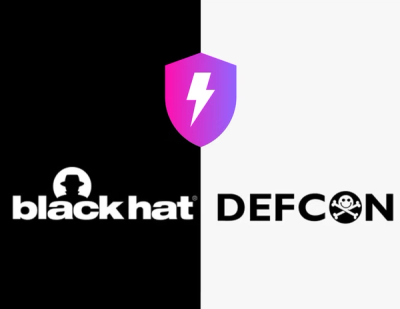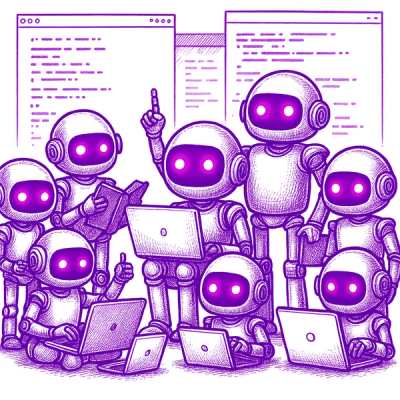
Research
/Security News
Contagious Interview Campaign Escalates With 67 Malicious npm Packages and New Malware Loader
North Korean threat actors deploy 67 malicious npm packages using the newly discovered XORIndex malware loader.
A state manager, graphics, image, and custom font drawing package for the SH1106 OLED screen based on the luma.oled package. It works with Raspberry Pi and other Linux-based single-board computers.
A state manager, graphics, image, and custom font drawing package for the SH1106 OLED screen based on the luma.oled package. It works with Raspberry Pi and other Linux-based single-board computers.
This package provides a comprehensive solution for managing states, drawing graphics, images, and custom fonts on the SH1106 OLED screen. It leverages the capabilities of the luma.oled package to offer an easy-to-use interface for Raspberry Pi and other Linux-based single-board computers.
To install the package, use pip:
pip install sh1106-framework
The package doesn't directly load image files for images and fonts, but instead uses custom JSON bitmap files.
This package comes with two tools: an image utility and a font utility. These take user-supplied image files containing bitmaps, and convert them to json files which the framework can load. This process is split apart from the framework itself in order to reduce load time.
The image utility can be accessed with the sh1106_image_generator command. It takes in a reference image, which contains one or more bitmaps within itself, and a JSON reference file, containing information about the names of the images for the framework to reference, along with their coordinates and sizes in the reference image.
The reference image can be of any size. Since the SH1106 display is monochromatic, each pixel only has a state of being on or off. In the reference image, an opaque white pixel represents a pixel being on, and any other color represents the pixel being off.
An example image can be found here, and its corresponding JSON file can be found here.
In the example image, the important color is the white, which represents the image's filled in pixels. The black and pink are simply for the sake of keeping track where each individual sub-image is.
In the JSON file, you'll see a list of entries, with arrays of four integers as the values. Bear in mind a single image loaded into the utility can contain multiple images within itself for the framework to use. The key of each entry is the name that the framework will use to reference the image after it's loaded. The four integers in the values represent the X coordinate, Y coordinate, width, and height of the image. The coordinate origin is at the top-left, with the top-left most pixel being 0,0.
If an entry looks like this: "smiley-face": [10,10,20,15] the framework will refer to it be the name "smiley-face". It will be 20 pixels wide and 15 pixels tall, and in the reference image provided, it will be at the 11th pixel from the left, and 11th pixel from the top.
To generate an output JSON file for the images, use the following terminal command:
sh1006_image_generator -i/--image <path to reference image> -j/--json <path to reference JSON> -o/--output <path to output file>
Then you'll use the output JSON file for initializing images when the framework is loading.
The font utility works the exact same as the image utility, except with the sh1106_font_generator command instead. Instead of using names for each entry, use the character that you want to assign to the sub-image. The name of the font will be set manually via code upon initialization. The default font that you'll most likely want to include can be found here: Image, JSON
Here is a simple ping-pong page that displays an image, draws some text, and switches between the two pages every second. It can be found in the tests folder of the package.
ping-pong.py
from sh1106_framework import SH1106Framework, StateManager
from ping import PingPage
from pong import PongPage
def __init():
SH1106Framework.register_font("default", "assets/default-font.json")
SH1106Framework.register_images("assets/example-images.json")
SH1106Framework.register_routes(
initial_route="ping",
routes={
"ping": PingPage(StateManager),
"pong": PongPage(StateManager),
}
)
SH1106Framework.begin(port=1, address=0x3C)
pass
if __name__ == "__main__":
__init()
ping.py
from sh1106_framework import Drawing, State
import time
class PingPage(State):
def __init__(self, state_manager):
self.state_manager = state_manager
def init(self):
pass
def enter(self):
self.time_of_start = time.time()
def update(self, dt):
if time.time() - self.time_of_start > 1:
self.state_manager.set_route("pong")
def render(self):
Drawing.draw_image("weather-rain", 0, 0)
Drawing.draw_text("Ping", 14, 0)
pong.py
from sh1106_framework import Drawing, State
import time
class PongPage(State):
def __init__(self, state_manager):
self.state_manager = state_manager
def init(self):
pass
def enter(self):
self.time_of_start = time.time()
def update(self, dt):
if time.time() - self.time_of_start > 1:
self.state_manager.set_route("ping")
def render(self):
Drawing.draw_image("weather-storm", 0, 0)
Drawing.draw_text("Pong", 14, 0)
The state manager handles various states (which can be thought of as pages) that are referred to with strings (called routes) that they've been associated with. In the example above, "ping" has been assigned to a "PingPage" state and "pong" has been assigned to a "PongPage" state.
Notice in the example how they're set up in the main file:
SH1106Framework.register_routes(
default_route="splash",
routes={
"ping": PingPage(StateManager),
"pong": PongPage(StateManager)
}
)
User-created states should follow this template, extending the State class:
from sh1106_framework import State
class MyCustomState(State):
def __init__(self, state_manager):
# This line is required
self.state_manager = state_manager
def init(self):
# Initialization code
def enter(self):
# State entered code
def update(self, dt):
# Update code, runs approximately 60 times per second
def render(self):
# Render code
Within the states, you can use the methods self.state_manager.set_route(route name) and self.state_manager.pop() to set the current state or to go to the previous state.
You can draw various graphics like lines, images, rectangles, and strings, as well as set individual pixels. This should be done within the render method of a state. Note that where color is mentioned, it should be either 0 or 1, with 0 representing an unlit pixel and 1 representing a lit pixel.
The screen will be automatically cleared before each render method is run.
from sh1106_framework import Drawing
# Draw rectangle
Drawing.draw_rect(x, y, width, height, color=1)
# Draw outlined rectangle
Drawing.draw_outlined_rect(x, y, width, height, color=1)
# Draw line
Drawing.draw_line(x0, y0, x1, y1, color=1)
# Set pixel
Drawing.set_pixel(x, y, color)
# Draw text (using font names defined in the main file)
Drawing.draw_text(text, x, y, color=1, font="default", scale=1, centered=False)
# Draw image (using image names defined in the reference JSON files)
Drawing.draw_image(image_name, x, y, color=1, scale=1, centered_horizontal=False, centered_vertical=False)
This project is licensed under the Apache License 2.0 - see the LICENSE file for details.
FAQs
A state manager, graphics, image, and custom font drawing package for the SH1106 OLED screen based on the luma.oled package. It works with Raspberry Pi and other Linux-based single-board computers.
We found that sh1106-framework demonstrated a healthy version release cadence and project activity because the last version was released less than a year ago. It has 1 open source maintainer collaborating on the project.
Did you know?

Socket for GitHub automatically highlights issues in each pull request and monitors the health of all your open source dependencies. Discover the contents of your packages and block harmful activity before you install or update your dependencies.

Research
/Security News
North Korean threat actors deploy 67 malicious npm packages using the newly discovered XORIndex malware loader.

Security News
Meet Socket at Black Hat & DEF CON 2025 for 1:1s, insider security talks at Allegiant Stadium, and a private dinner with top minds in software supply chain security.

Security News
CAI is a new open source AI framework that automates penetration testing tasks like scanning and exploitation up to 3,600× faster than humans.